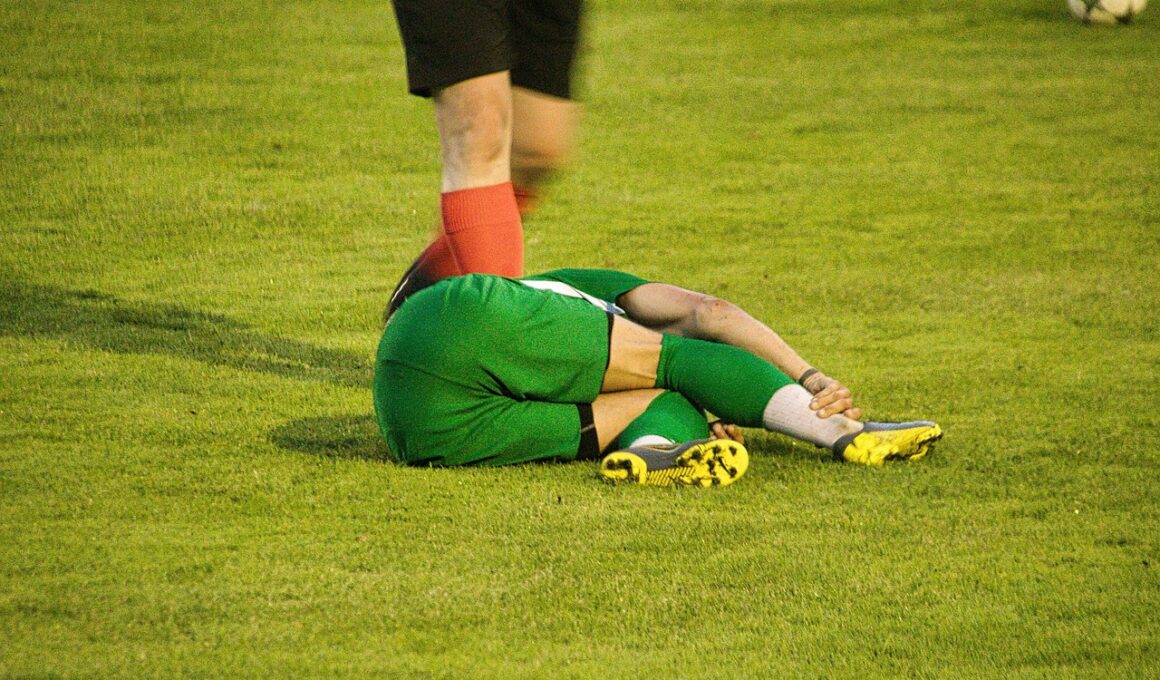Signs of Injury in Young Athletes: When to Seek Medical Help
Youth sports participation is vital for physical and emotional development. However, injuries can occur unexpectedly, leading to a need for parents and coaches to be vigilant. Understanding the signs of injury in young athletes is crucial so that appropriate steps can be taken swiftly. If an athlete frequently complains about pain in specific areas, parents and coaches should take note. Persistent discomfort is not just a part of getting stronger; it often indicates potential injury. Parents should also remain alert for behavioral changes in their young athletes. If a child becomes irritable or begins to shy away from practice, it may indicate underlying issues. Monitoring overall performance is equally important. If a normally active child slows down or struggles with tasks they once excelled at, it may signal injury. Additionally, check for visible signs, such as swelling or bruising around joints. Understanding these crucial indicators will aid in making informed decisions regarding seeking medical care. Early intervention can ensure that injuries are thoroughly assessed and can significantly impact recovery and future performance.
Seeking medical attention is essential if signs of injury persist. Parents should be proactive in observing any unusual symptoms. If the pain in specific areas continues for longer than a few days, it is advisable to consult a pediatric sports medicine specialist. Moreover, if an athlete comments about weakness or instability in affected areas, that’s a major red flag. Certainly, even minor sprains can escalate if left untreated, leading to worsening conditions. In addition, observe any limping or alteration in walking patterns. These can also be indications that the child is compensating for injuries. When young athletes report any numbness or tingling sensations, this warrants urgent medical advisory. Likewise, any incident that results in loss of consciousness must be taken extremely seriously. Monitoring posture during any form of activity is paramount as well; poor posture can indicate developing injuries. Furthermore, establishing regular check-ups can help ensure that youth athletes are not pushing their limits. Regular evaluations can assist in identifying weaknesses early, thus minimizing the risk of injury, which is paramount for maintaining long-term health.
Educating Athletes on Injury Symptoms
Create an environment where young athletes feel empowered to speak about their bodies. Coaches and parents should educate them on recognizing signs of injuries. Starting conversations about how it feels when something is amiss can help demystify worries about appearing weak. Encouraging regular discussions about physical exertion and discomfort fosters better communication. Athletes should be informed about why it’s vital to report minor aches before they become severe. They must learn to differentiate between expected soreness from training and actual pain from an injury. Conducting workshops on injury prevention can be an effective way to raise awareness. Families can attend workshops together to build a supportive fitness culture. Teach athletes techniques for self-monitoring, such as maintaining a training diary. This can help record how they feel during practices and games, which can be useful for identifying patterns of discomfort. Ensure to include recovery strategies that gel well with their training routines, emphasizing recovery as a crucial part of training. Lastly, share personal stories from seasoned athletes about overcoming injuries, so young athletes understand they are not alone in their struggles.
Understanding common injuries associated with youth sports can aid parents, coaches, and athletes together. Some prevalent injuries include sprains, strains, fractures, and tendinitis. Often, sprains are the result of twisting or impact, while strains are caused by overstretching muscles. Parents should familiarize themselves with the symptoms of these injuries, including swelling, bruising, and limited range of motion. Fractures usually involve a sharp pain at the injury site and often require immediate medical intervention. Recognizing tendinitis in growing athletes can be tricky, as early signs might be similar to regular soreness. Parents should be aware of any recurring joint pain, particularly in the knees, ankles, or elbows. Developing a good understanding of how these injuries manifest can aid in early detection. Thus, teaching young athletes about these injuries can also facilitate a collaborative relationship where they feel empowered to communicate. Coaches should include safety training as part of regular practice routines, emphasizing the importance of warm-up and cool-down exercises. Alongside these, maintaining proper techniques in activities can considerably reduce injury rates among young athletes.
Importance of Immediate Action
Taking immediate action post-injury is fundamental for a young athlete’s recovery. After about the first 24 hours following the injury, a child’s activity level should be assessed. Parents and coaches should discuss if a visit to a healthcare provider is necessary. Quick but careful evaluations determine if the athlete may participate in modified practices or need complete rest. Delaying medical advice can worsen injuries, prolong recovery, and increase time spent away from sports. Young athletes are particularly susceptible to further injuries if they return to play too soon without proper evaluation. Educate on the importance of listening to their bodies and the significance of waiting for medical clearance before resuming. All parties should understand that young athletes have physical limits despite their enthusiasm and eagerness to compete. Rushing back to activity not only risks their current health but can yield long-term implications for their athletic endeavors. Coaches must remember they play a crucial role in establishing safe training environments. Engaging in regular dialogues about injury protocols can instill lifelong lessons in young athletes about the importance of prioritizing health.
Recovery is a multifaceted process requiring patience and adherence to guidelines from healthcare professionals. When a young athlete has sustained an injury, the focus must shift toward rehabilitation to foster a safe return to activities. Adhering strictly to recovery protocols is essential, and families should be involved in discussions about treatment plans. Consistent follow-ups ensure injuries are tracking positively. Parents should encourage their children to exercise during recovery, as light activities can aid healing. Different types of rehabilitation exercises are often tailored to meet the specific injury. Moreover, nutrition and hydration play a critical role in the recovery process. Ensuring athletes consume a well-balanced diet can expedite healing. Educational workshops surrounding sports nutrition can be beneficial to young athletes as they often neglect proper nutrient intake. Celebrate small victories during recovery to motivate the young athletes toward completing their rehabilitation program. Furthermore, implementing mindfulness practices can provide emotional support during recovery. This approach helps in managing feelings of frustration stemming from inactivity. Ongoing communication, patience, and encouragement during this period will aid in a successful return to play.
Conclusion: Prioritizing Youth Health
In conclusion, recognizing injury signs in young athletes is crucial for their health. The responsibility lies with coaches, parents, and athletes themselves to monitor for any irregularities. Early identification and access to medical advice can lead to optimal recovery outcomes, preventing minor injuries from becoming severe. Furthermore, establishing open communication through educational initiatives is vital in creating a culture of awareness around injury signs. Regular check-ups are not a luxury but a necessity for the growing athlete, ensuring that fitness remains secure. Encouraging athletes to express their feelings about injuries fosters an environment where physical well-being is structured at the forefront of their sporting experience. Emphasizing careful monitoring of activities can yield a safe sports environment, allowing young athletes to thrive. As participants in sports, they should be aware of their bodily signals and the importance of proper care. The overarching goal must remain securing the long-term health of young athletes. Doing so not only protects them physically but also ensures they enjoy engaging in sports for years to come.


